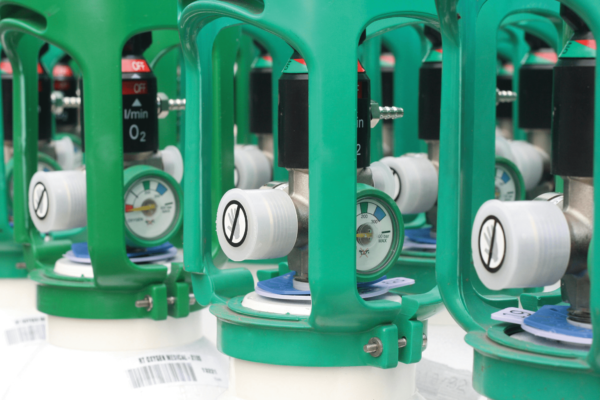In this section
Healthcare Professionals
Oxygen makes up 21% of the air around us. When we breathe, we take in oxygen to produce energy. Correct levels of oxygen reduce tiredness and the workload on the heart.
Why does a patient need home oxygen therapy?
Home oxygen therapy is usually prescribed for patients with respiratory diseases such as Chronic Obstructive Pulmonary Disease (COPD), cystic fibrosis, pulmonary fibrosis and chronic asthma. Home oxygen therapy may also be prescribed for patients who suffer from sleep disordered breathing as well as some cardiac and neurological disorders (cluster headache) and has a role within palliative care.
Home oxygen therapy is not normally prescribed to relieve the symptoms of breathlessness and would usually only be prescribed for patients who are hypoxic. To screen for hypoxia, the patient should have pulse oximetry performed – readings below 92% saturation indicate hypoxia.
Long Term Oxygen Therapy (LTOT) refers to the provision of home oxygen therapy for continuous use at home for patients with chronic hypoxaemia (PaO2 at or below 7.3 kPa, (55mHg)). LTOT can be prescribed in chronic hypoxaemia patients when the clinically stable PaO2 is between 7.3 kPa and 8 kPa, together with the presence of secondary polycythaemia or clinical/echocardiographic evidence of pulmonary hypertension.
Home oxygen therapy must be delivered at a sufficient level to raise the waking oxygen tension above 8 kPa, (60 mmHg). LTOT is usually given for at least 15 hours daily, including nighttime. Once started, LTOT is normally a lifelong therapy.
Remember, being dependent on oxygen does not mean life stops for a patient. Today’s oxygen equipment means patients can get out and about more easily. Oxygen can also be arranged when a patient wants to go away from home.







